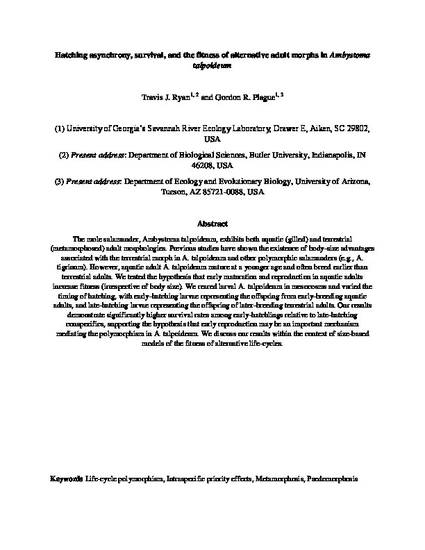
The mole salamander, Ambystoma talpoideum, exhibits both aquatic (gilled) and terrestrial (metamorphosed) adult morphologies. Previous studies have shown the existence of body-size advantages associated with the terrestrial morph in A. talpoideum and other polymorphic salamanders (e.g., A. tigrinum). However, aquatic adult A. talpoideum mature at a younger age and often breed earlier than terrestrial adults. We tested the hypothesis that early maturation and reproduction in aquatic adults increase fitness (irrespective of body size). We reared larval A. talpoideum in mesocosms and varied the timing of hatching, with early-hatching larvae representing the offspring from early-breeding aquatic adults, and late-hatching larvae representing the offspring of later-breeding terrestrial adults. Our results demonstrate significantly higher survival rates among early-hatchlings relative to late-hatching conspecifics, supporting the hypothesis that early reproduction may be an important mechanism mediating the polymorphism in A. talpoideum. We discuss our results within the context of size-based models of the fitness of alternative life-cycles.
“The final publication is available at Springer via http://dx.doi.org/10.1007/s00442-004-1563-x”
